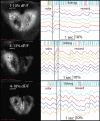Direct behavioral and neurophysiological evidence for retronasal olfaction in mice
- PMID: 25675095
- PMCID: PMC4326425
- DOI: 10.1371/journal.pone.0117218
Direct behavioral and neurophysiological evidence for retronasal olfaction in mice
Abstract
The neuroscience of flavor perception is hence becoming increasingly important to understand food flavor perception that guides food selection, ingestion and appreciation. We recently provided evidence that rats can use the retronasal mode of olfaction, an essential element of human flavor perception. We showed that in rats, like humans, odors can acquire a taste. We and others also defined how the input of the olfactory bulb (OB) -not functionally imageable in humans- codes retronasal smell in anesthetized rat. The powerful awake transgenic mouse, however, would be a valuable additional model in the study of flavor neuroscience. We used a go/no-go behavioral task to test the mouse's ability to detect and discriminate the retronasal odor amyl acetate. In this paradigm a tasteless aqueous odor solution was licked by water-restricted head-fixed mice from a lick spout. Orthonasal contamination was avoided. The retronasal odor was successfully discriminated by mice against pure distilled water in a concentration-dependent manner. Bulbectomy removed the mice's ability to discriminate the retronasal odor but not tastants. The OB showed robust optical calcium responses to retronasal odorants in these awake mice. These results suggest that mice, like rats, are capable of smelling retronasally. This direct neuro-behavioral evidence establishes the mouse as a useful additional animal model for flavor research.
Conflict of interest statement
Figures




References
-
- Small DM, Prescott J (2005) Odor/taste integration and the perception of flavor. Exp Br Res 166: 345–357. - PubMed
-
- Verhagen JV, Engelen L (2006) The neurocognitive bases of human multimodal food perception:Sensory integration. Neurosc Biobehav Rev 30: 613–650. - PubMed
-
- Shepherd GM (2011) Neurogastronomy: How the Brain Creates Flavor and Why It Matters: Columbia University Press; 10.1080/17437199.2011.587961 - DOI
Publication types
MeSH terms
Associated data
Grants and funding
LinkOut - more resources
Full Text Sources
Other Literature Sources
Miscellaneous

